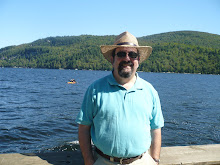Article published Aug 26, 2010
An historic race may make more history
By Louis Porter
Vermont Press Bureau
An historic race may make more history
By Louis Porter
Vermont Press Bureau
MONTPELIER — A vigorous five-way contest to become the Democratic nominee in the race to become governor may not be the only bit of history made in the primary election which is almost, but not quite, concluded.
If the election goes to a recount – and it seems likely candidates will be within the 2 percent margin that allows a candidate to call for recount of votes in Vermont – it will be the first time in recent history that a primary for statewide office has sparked a recount.
Official, certified results will be filed Tuesday, although the Secretary of State's office may put out updated estimates before then.
Unofficial tallies have Senate President Pro Tem Peter Shumlin just fewer than 200 votes ahead of his nearest competitor, state Sen. Doug Racine.
Racine has said he will await official results before deciding whether to ask for a recount, and Secretary of State Deborah Markowitz will almost certainly be able to request a recount as well.
Such a recount would entail ballots being transported to Washington County Superior Court, where the recount would take place. Exactly how long a recount would take is not known, but a fair guess would be up to two weeks after the request is made, said Deputy Secretary of State Bill Dalton.
Such a request must be made within 10 days of the election.
One thing that makes it hard to determine how long such a recount would take is that a candidate challenging the results of an election can ask to have optical scan ballots recounted by machine and only ballots from hand-counting towns recounted by hand.
Since roughly 70 percent of the state's ballots (from roughly 40 percent of polling places) use machine-read ballots that would be much quicker than a full recount by hand.
However, in part because of concerns about the security of machine-read ballots, a challenging candidate can still request that all ballots (roughly 70,000 in this case) be examined and tallied by hand.
“It's up to the challenger,” Dalton said.
In part because more polling places in the state now use optical scanned ballots, the margin by which a candidate can apparently lose and still request a recount was reduced this year from 5 percent of the total vote count to 2 percent.
That is a function of the voting system, thanks to more optical scan ballots, being more accurate, Dalton said.
There have been nine statewide races that have gone to recounts since 1958, when Robert Stafford beat Democrat Bernard Leddy, both in the original tally and after a recount.
There have been times when a recount has changed the result of an election, including for current auditor Tom Salmon (then a Democrat, now a Republican) in his 2006 contest against Republican Randy Brock.
In a recount of the November general election of that year that went into December, Salmon's vote total grew from 111,349 to 111,770. Brock's votes, meanwhile, grew as well, but only to 111,668, giving Salmon the victory.
It was in part because of that recount – in which most of the errors were in hand-counting towns – that the law was changed to allow the results from optical-scan polling locations to be recounted by machine, if the challenger requested it, said State Rep. Ken Atkins of Winooski, a member of the House Government Operations Committee.
“We tried to make it easier for those that have the optical scanners,” he said. “Instead of having to count each dot they can put them through and see if they get the same count.”
In the recounts he has observed, including for a local contest in his hometown, optical scans have proven to be accurate, Atkins said.
“The optical scan was right on,” he said.
In the end, he is proud of his Democratic colleagues running for governor and the way they have conducted themselves, he said.
“I am just so proud of those five people. They had a really adamant campaign, all of them, and they kept it clean,” Atkins said.
In the end, it is far from a sure thing that there will be a recount.
Eric Davis, Middlebury College professor emeritus of political science, said if official results are close to the unofficial tally, Shumlin may move ahead without a recount.
“My guess is that if the certified results show a margin close to what (The Associated Press) is reporting now, in the 175 to 200 range, then there's a strong argument for having the winner move forward from there into the general election,” Davis said. “If the certified result shows Racine behind by less than 100, then I think the case for a recount would become stronger.”
In any case, the Secretary of State's office will be working to get the official results compiled as the first step.
“We will be working over the weekend,” Dalton said.

No comments:
Post a Comment